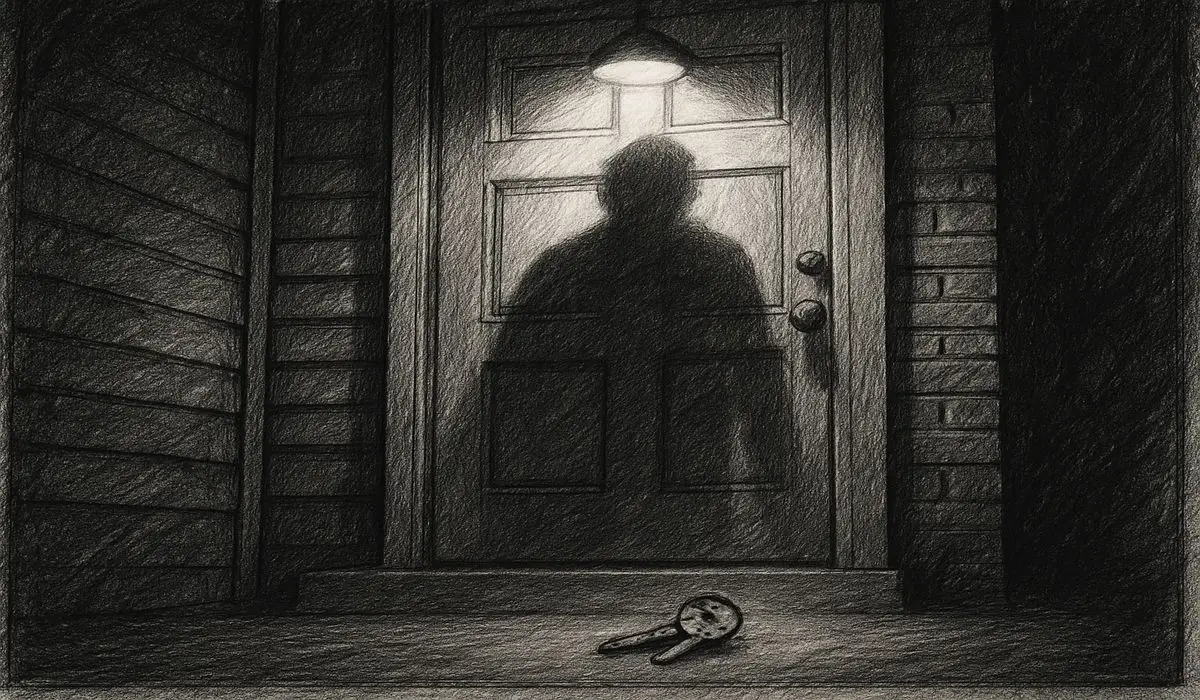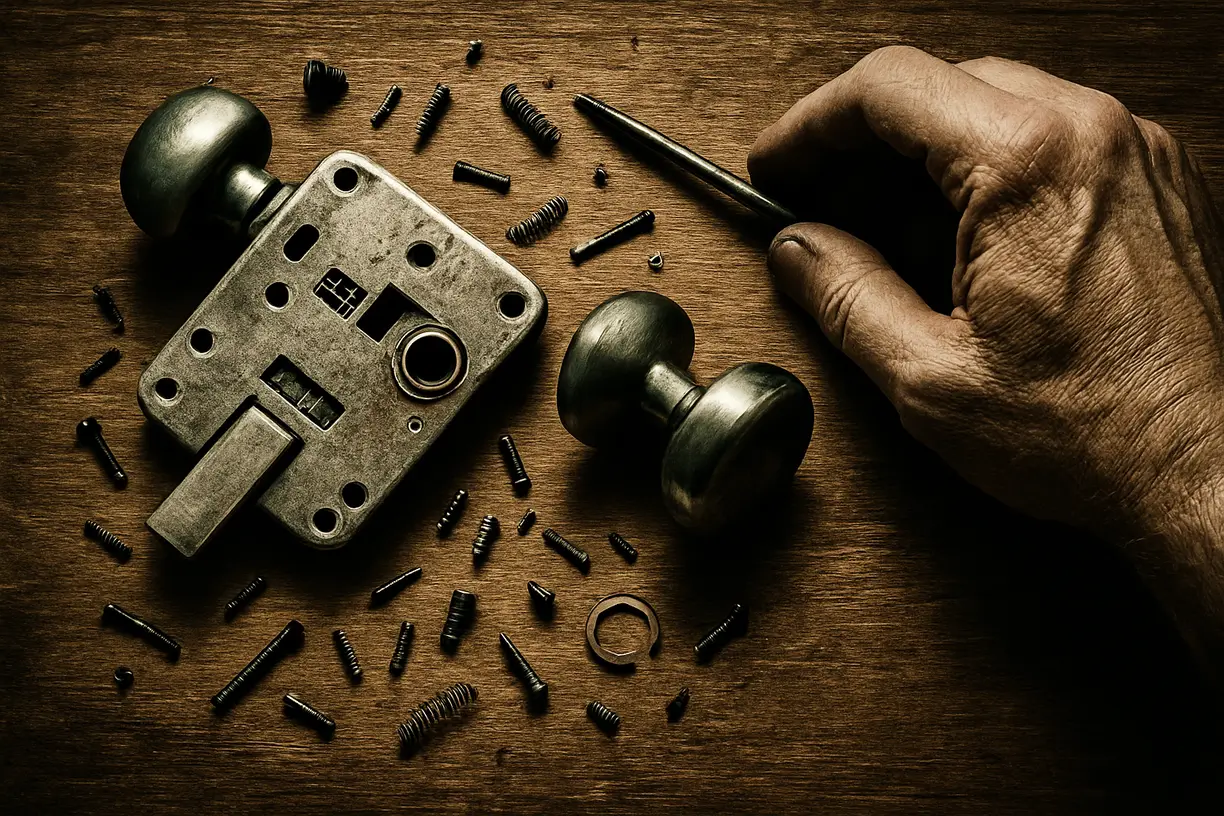The Hidden Dangers Behind Your Front Door – And How Emergency Help Can Save the Day
Why paying attention to locks and small fixes now may save you money and hassle later.

People rarely think about the locks on their doors until something goes wrong. That’s the paradox of home security: the very things meant to protect us are often ignored until they stop working, jam shut, or become useless after a set of keys disappears.
For homeowners, that split second when a door won’t budge or a deadbolt refuses to turn can transform a regular night into a disaster.
The details matter – a loose screw, a worn cylinder, or a copy of a key floating around in the wrong hands can make the difference between a safe night’s sleep and a bloody mess the next morning.
When Safety Fails at the Doorstep
Across Canada, police reports confirm burglary remains a persistent threat. According to Statistics Canada, break-and-enters accounted for over 125,000 reported incidents in 2023 [1].
About one in five involved residential properties. These numbers don’t capture the quieter, everyday emergencies: lost keys left in a cab, locks that freeze in winter, or a jammed latch after years of wear.
Each of these small crises creates the same outcome – homeowners suddenly on the wrong side of their own front door.
“Do I really need professional help for a simple lock?”
That question surfaces often, especially when people assume they can fix the issue with a YouTube tutorial or a butter knife. But professionals argue that rushed fixes can lead to bigger hazards.
The Canadian Centre for Occupational Health and Safety warns that forcing a door can result in physical injury or damage to the frame, turning a quick repair into hundreds of dollars in replacements [2].
That’s not just overkill – it’s preventable with the right residential locksmith services.
Everyday Emergencies
Emergency help can look different depending on the situation. A lost key at 11 p.m. isn’t the same as a broken cylinder on a Sunday morning. Yet both boil down to the same principle: restored access without adding damage.
Residential locksmiths describe three recurring calls:
- House Lockout – Mothers rushing back from errands only to realize the keys are inside. Students returning to a locked apartment with no spare. It rarely happens at “convenient” hours.
- Lock Rekey or Replacement – New homeowners who don’t know how many old keys are circulating. A tenant whose roommate just moved out on bad terms. Rekey = same lock, new key, old keys disabled.
- Door Lock Repair – Locks corrode. Internal pins wear down. Misaligned bolts stick. A damn tough winter freeze can jam the cleanest hardware. Repair keeps the frame safe without gutting the system.
Local providers such as LocksmithsLock in Moncton highlight the same problems across regions. Quick fixes prevent damage, but only when handled properly. Professional locksmith services are trained to bypass locks without breaking them – a skill most DIYers lack.
(Ed. note: Homeowners trying makeshift fixes often end up calling locksmiths anyway, but with added repair costs.)
Why DIY Can Backfire
Lock maintenance has become a niche corner of internet advice.
Online forums overflow with quick hacks: spraying WD-40 into frozen locks, using magnets to “bump” pins, or reheating key blanks with lighters to slip them through sluggish cylinders.
But studies on burglary prevention from the U.S. Department of Justice caution that lock manipulation methods widely shared online are not only unsafe for homeowners but also double as guidebooks for offenders [3].
The irony is hard to miss: the very shortcuts designed to “save” time may advertise weakness in the system.
That’s not to say homeowners are helpless. Preventive measures matter:
- Regularly tightening screws and cleaning strike plates
- Lubricating locks properly (graphite powder, not leftover garage sprays)
- Replacing deadbolts older than a decade
Still, once failure happens, professional intervention is usually the safer option.
The Bigger Picture: Home Security
Lock issues can’t be separated from the broader subject of home safety. Insurance Bureau of Canada reports that theft claims often spike after summer vacations and holiday seasons [4].
Why? Empty homes invite attention. Weak locks compound the problem.
Some criminologists argue deterrence is layered = the tougher the barrier, the less reward in trying.
Deadbolts, rekeyed systems, and maintained frames are visible signals that a homeowner pays attention. That alone discourages opportunistic break-ins.
“Can’t cameras replace all this?” – it’s a fair question. Security systems do help, but experts like the International Association of Chiefs of Police emphasize that locks remain the first line of defense [5].
Cameras may capture footage, but they don’t stop someone already twisting a weak latch.
What Residents Often Forget
During my reporting, a recurring theme surfaced: many homeowners assume once locks are installed, the job is finished.
But hardware fatigue is real.
The American National Standards Institute categorizes lock performance in cycles – 50,000, 100,000, up to 200,000 turns depending on grade [6].
That means every twist brings you closer to eventual failure.
How many of us actually track those cycles? Almost none. Instead, people wait until the lock jams—leaving them stranded on the porch, groceries melting in the car.
The Quiet Cost of Delay
Procrastination is not free. The Home Safety Council found that forced entry repairs cost twice as much as preventive maintenance [7].
A snapped key wedged in the cylinder? That’s a replacement bill. A jammed deadbolt forcing the frame out of alignment? Add a carpenter to the invoice. Short delays create long invoices = the math is simple.
“Why not just hide a spare key outside?”
Because thieves know the common hiding spots, from flowerpots to fake rocks. Police services across Canadian cities routinely warn residents against outdoor key stashing [8]. It solves nothing, exposes everything.
When to Call Emergency Help
Timing matters. Experts recommend calling emergency locksmith services if:
- You’re locked out and risk breaking the lock trying yourself
- The key is lost/stolen, raising security concerns
- The lock is damaged and no longer reliable
Professional locksmiths bring tools homeowners don’t own, like plug spinners, pinning kits, and scope lights. Their goal isn’t just quick access but safe, damage-free fixes where possible.
Final Thoughts
Home safety often hides in plain sight—bolts, cylinders, and latches we pass without thinking. The danger is not only burglary but also inaccessibility. Whether it’s a lockout at midnight or a broken latch on a Sunday, ignoring these everyday systems creates risks that stack up fast.
The takeaway is clear: treat lock maintenance the same way you treat smoke detector batteries. It’s part of the same safety net.
And when the system fails, don’t gamble on quick fixes ripped from a forum thread—professional emergency help exists for a reason.
References
[1] Statistics Canada – “Police-reported crime statistics in Canada, 2023” – July 25, 2024
[2] Canadian Centre for Occupational Health and Safety – “Safe Work Practices” – Accessed September 2025
[3] U.S. Department of Justice – “Problem-Oriented Guides for Police: Burglary” – July 2017
[4] Insurance Bureau of Canada – “Home Insurance and Theft Claims Data” – Accessed September 2025
[5] International Association of Chiefs of Police – “Crime Prevention Through Environmental Design” – Accessed September 2025
[6] American National Standards Institute (ANSI) – “Lock Grades and Standards” – Accessed September 2025
[7] Home Safety Council – “The State of Home Safety in America” – 2004 Report
[8] Toronto Police Service – “Residential Safety Tips” – Accessed September 2025

